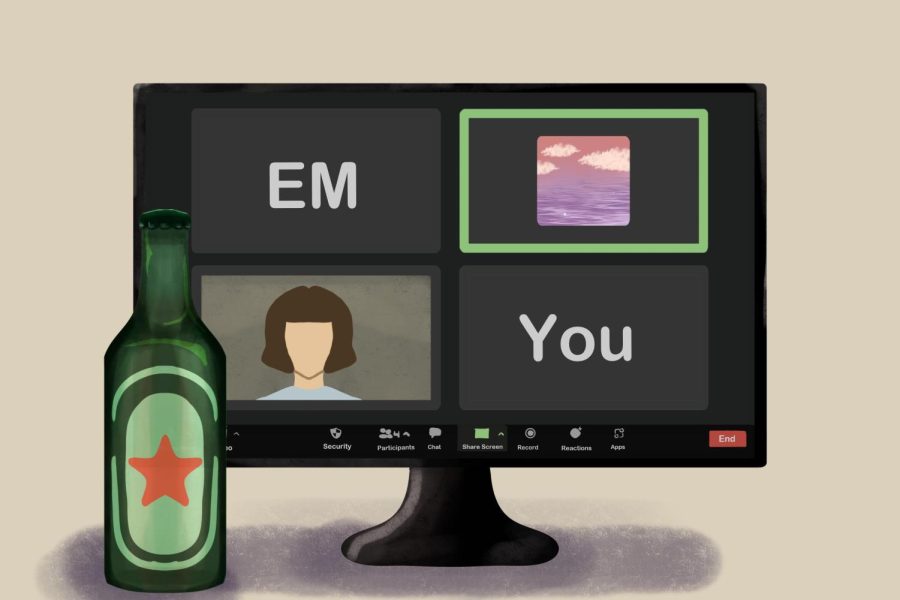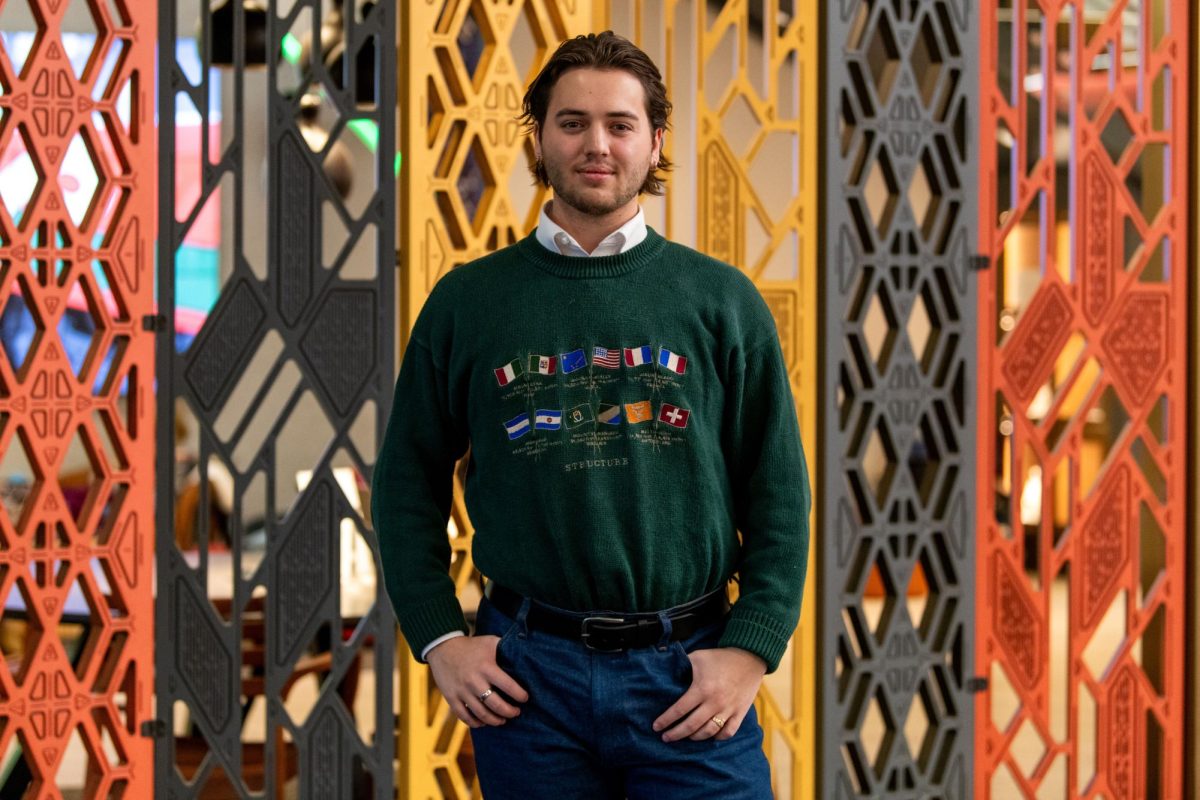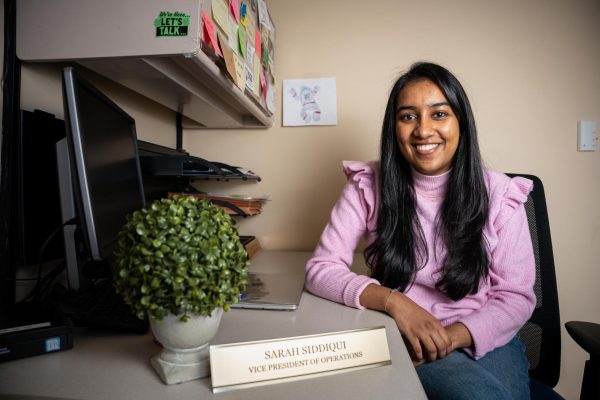The most social of drugs’: Study shows increased self-focus when consuming alcohol in virtual settings
March 26, 2023
Michael Sayette said surveys have indicated an increase in alcohol consumption from spring 2019 to spring 2020 during the COVID-19 pandemic.
“During the height of COVID, bars were risky places to be and virtual social interactions became far more popular, leading to the widespread experience of virtual cocktails,” said Sayette, a distinguished professor of psychology and psychiatry and director of the Alcohol and Smoking Research Laboratory at Pitt.
In a study published in Clinical Psychological Science in November 2022, Sayette and six other researchers analyzed the effect of alcohol on self-focused attention and where people direct their gaze in virtual social interactions. Researchers conducted the study at Catharine Fairbairn’s lab at the University of Illinois Urbana-Champaign.
Fairbairn, an associate professor in the department of psychology at UIUC, said the effects of alcohol use during the COVID-19 pandemic are “complex.”
“However, at least temporarily, COVID-19 tended to move drinkers in the direction of smaller group[s] and virtual drinking spaces and away from larger group[s] and public gatherings,” Fairbairn said.
The study investigated social drinkers ages 21-30 during two video chat sessions lasting four minutes each. The participants talked to strangers and friends about topics like their favorite music and their towns.
Sayette said the study explains why people choose to drink alcohol in group social settings and how information is processed while drinking.
“Perhaps alcohol makes us less self-aware, and we can be free to interact without worrying about how we are coming across to the people with whom we are speaking,” Sayette said. “Or perhaps alcohol allows us to focus in on just what is most directly in front of us, allowing us in some cases to forget our daily worries and just attend to the joke our partner is telling.”
The study tracked the “gaze behavior” of participants through eye movement during the online interactions. Results found that people drinking alcohol spent more time looking at their own face than their partner’s while communicating through the computer screen.
“This increase in self-focus is not what we would expect when drinking in a real face-to-face conversation when one does not have a mirror image of their face shining back at them,” Sayette said.
Sayette said alcohol consumption in social settings can be a “crutch” for some, but that interactions can change in different settings depending on if alcohol is present or not.
“Natural experiments such as Dry January also provide time for people to learn how to have fun socially without relying on alcohol, and as the media reports of the increasing popularity of Dry January suggest, many people start to realize that alcohol is not required to have fun socially,” Sayette said.
Madeline Goodwin, a fourth-year clinical psychology graduate student in the Alcohol and Smoking Research Laboratory, said alcohol is not a “simple drug” and can have effects ranging from rewarding social interactions to instances of aggression and violence.
“Understanding when and why alcohol produces these social effects is critical to reducing alcohol-related harm,” Goodwin said. “Now that the pandemic has shifted many interactions to the virtual world, this adds a whole new set of environmental factors that are likely to moderate the effects of alcohol.”
Sayette and Goodwin are currently working on a new study that analyzes what strangers talk about when they drink alcohol together. Goodwin said studying “the most social of drugs” can provide greater insights into the rewards and hazards of alcohol in social settings.
“I hope to study how alcohol impacts the way we communicate with each other,” Goodwin said.c








